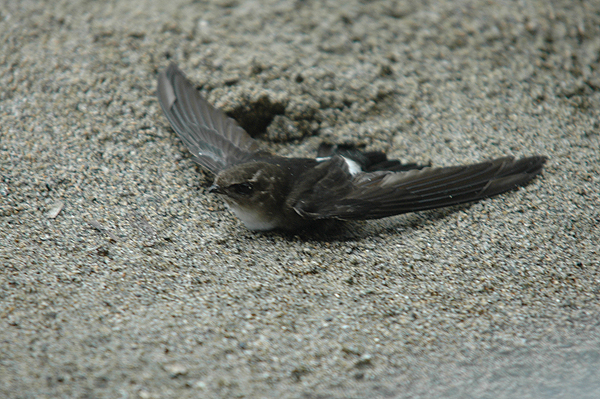Antillean Palm Swift

| Antillean Palm Swift | |
|---|---|
| Conservation status | |
 Least Concern (IUCN 3.1) | |
| Scientific classification | |
| Kingdom: | Animalia |
| Phylum: | Chordata |
| Class: | Aves |
| Order: | Apodiformes |
| Family: | Apodidae |
| Genus: | Tachornis |
| Species: | T. phoenicobia |
| Binomial name | |
| Tachornis phoenicobia Gosse, 1847 | |
The Antillean Palm Swift (Tachornis phoenicobia) is a small swift. It has distinctive black-and-white markings on its underparts, rump, and throat, making it one of the most unmistakable species of swifts in North America.
The Antillean Palm Swift's diet consists mainly of insects that it takes in from the air columns or from the surface of the water. These gregarious birds form small to medium-size flocks. They breed year-round in colonies around coastal areas in the dead fronds that hang from palms. While the nesting biology of this bird is poorly known, estimated incubation period by both sexes is 18 - 21 days. The altricial young are brooded by the female and stay in the nest for an estimated 20 - 28 days, being fed by both parents. They typically have 1 to 2 broods a year.
This species has a large range, with an estimated global extent of occurrence of 190,000 km². It is fairly common in its native range in the Caribbean, from lowland Cuba to the Isle of Pines,Hispaniola, and Jamaica, though accidental vagrants have been observed as far north as the Florida Keys at least once.
No comments:
Post a Comment